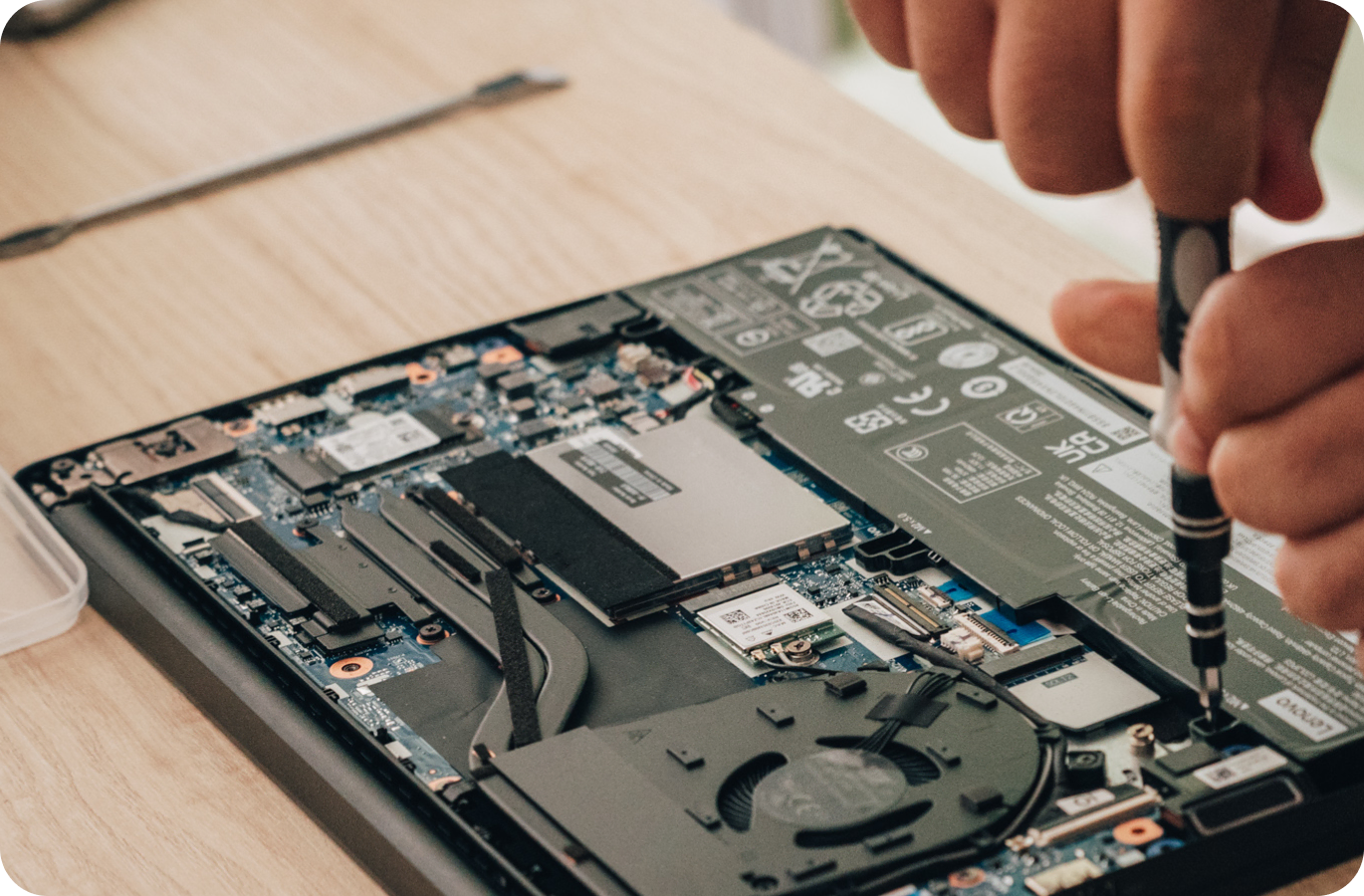IT x RH : Comment faciliter cette collaboration cruciale pour votre performance ?

Découvrez notre solution tout-en-un
Je suis ravi de vous parler aujourd’hui de mon expérience des relations entre les services IT et RH dans les startups et scaleups pour lesquels nous travaillons au quotidien.
J’espère que mon retour d’expérience pourra éclairer vos décisions concernant ce levier important de la performance de votre entreprise, surtout si vous êtes en phase de croissance rapide ! 📈
Onboarding : un travail d'équipe entre RH et IT 🤝
Dans la vie d’un salarié dans votre entreprise, après la phase de recrutement arrive l’onboarding.
La nouvelle recrue profite de cette période clé pour :
- faire connaissance avec vos équipes ;
- s’approprier les locaux de votre entreprise ;
- découvrir les procédures internes et les moyens de communication…
- et plein d’autres choses encore !
En réalité, l’onboarding est un processus constitué de nombreuses étapes, toutes importantes pour une intégration réussie et sereine de vos nouveaux collaborateurs.
Et ce qu’on souhaite à tout prix éviter, c’est que la partie IT de l’onboarding ne vous fasse perdre du temps ou vous contraigne à gérer des d’urgences… D’autant plus que le reste de l’onboarding est très dépendant de la mise à disposition rapide du matériel informatique nécessaire !
Mais qui est chargé de cette phase d’onboarding ?
Le premier point de contact d’un salarié avec votre entreprise est le service des Ressources Humaines. Son rôle est de gérer les salariés et de garantir qu’ils disposent des outils et d'un cadre, pour être efficaces et épanouis dans leur rôle. 🦾
De son côté, la DSI a pour responsabilité de gérer le système d’information et donc les ordinateurs, accès et logiciels utilisés par l’entreprise.
Il existe un domaine sur lequel les deux services doivent travailler ensemble : le poste de travail. Ceci inclut :
- le matériel (ordinateur, écran, souris, mobilier du bureau, etc.) ;
- les logiciels (outils de bureautique, ERP, CRM, etc.) ;
- et les accès (par exemple, à Gmail, Slack, Notion ou de nombreux autres outils).
Le poste de travail est un des garants de la productivité de vos salariés. Il dépend directement de l’IT, mais aussi des RH dans le cas d’un onboarding.
C’est donc un peu compliqué !

Entre l’IT et les RH : qui fait quoi ? 🤔
Alors, entre l’IT et les RH, qui fait quoi dans le schéma traditionnel de l’onboarding ?
Mais aussi :
- Comment se passe la passation des informations ?
- Comment doit se déclencher la commande d’un nouvel ordinateur ?
- Qui la prend en charge concrètement, où et comment ?
- Combien de temps à l’avance faut-il s’y prendre pour commander un ordinateur ?
- Qui définit le type de matériel, le budget alloué et la date de réception requise du matériel ?
Ces nombreuses questions pratiques se posent dans la plupart des entreprises que nous rencontrons. Ce que j’observe, c’est que les processus restent souvent mal définis. 😣
Le résultat ? Tout se passe bien, tant que l’équipe est petite… Mais des incompréhensions, des frictions et des pertes de temps apparaissent rapidement, dès que l’équipe s’agrandit.
Et c’est particulièrement le cas pendant les phases d’hypercroissance !
Ce qu’il faut pour résoudre ces problèmes, c’est un outil qui “guide” la pratique.
Focus sur les offboardings ! 🛫
Lors du départ d’un salarié, le service IT n’est pas responsable de la récupération du matériel, pour des raisons légales.
En effet, l’offboarding doit être géré par les Ressources Humaines, afin de garantir la sécurisation des données informatiques et le bon état du matériel informatique. C’est particulièrement important lors d’un départ conflictuel.
Or, tant que l’équipe informatique n’a pas physiquement récupéré le matériel, il est difficile de savoir où et dans quel état se trouve un ordinateur spécifique ! Cela peut vite tourner au casse-tête.

Collaboration IT & RH : 3 étapes pour améliorer les processus

Étape 1 : Définir les périmètres de responsabilité
Je souhaite aussi attirer votre attention sur l’importance d’une collaboration plus fluide entre les équipes IT et RH.
Cela passe concrètement par la définition précise des périmètres de responsabilité de chaque équipe.
Un ensemble de questions doivent être ouvertement et explicitement abordées et résolues, comme les suivantes :
- Qui gère les factures liées aux ordinateurs ?
- Qui a la responsabilité de commander de nouveaux matériels IT, pour tel ou tel département ?
- Quel département s’occupe des reprises de matériel, lors d’un offboarding ?
Cette première étape est fondamentale pour que les règles soient définies et connues par toute l’équipe.

Étape 2 : Améliorer la communication
Les services IT et HR communiquent le plus souvent avec les outils de communication habituels, fournis par leur entreprise : email, Slack, Notion, Typeform, etc. ✉️
Ces outils sont utiles dans de nombreux cas, mais ne sont pas idéaux pour centraliser les informations concernant votre parc informatique.
Pour cela, il vous faut une solution dédiée et conçue spécifiquement pour gérer cette mission.
Si votre entreprise utilise une plateforme de gestion du parc informatique tout-en-un, comme Rzilient, vos équipes n’ont quasiment plus besoin de communiquer sur ce sujet. Tout est défini en amont, centralisé et en grande partie automatisé !

Étape 3 : Automatiser et centraliser la gestion du parc informatique
Pour s’organiser, de nombreuses startups créent des templates, ou commandes-types, permettant aux équipes de définir leurs besoins en termes d’équipement informatique. 📄
Par exemple, un développeur informatique recevra un Mac 16 pouces, doté de caractéristiques spécifiques, ou encore un webdesigner bénéficiera d’un écran plus grand et d’une carte graphique performante.
C’est en général l’équipe IT qui définit la performance des ordinateurs, selon les fonctions des salariés.
Comment faciliter l’achat (ou la location) de votre matériel informatique ? Que vous travailliez pour les RH ou l’IT, vous pouvez créer vos catalogues de produits en fonction des profils de votre organisation. Et ce, directement depuis notre plateforme dans l’interface d’achat ! Ainsi, plus de questions à vous poser, vos références sont pré-filtrées en fonction du profil de votre prochaine recrue. C’est hyper simple !
Vous allez me dire : et quid d’un simple fichier Excel ou Google Sheets ?
Le problème de ces fichiers sont nombreux :
- erreurs de lecture ;
- perte de temps ;
- écrasement des informations importantes par mégarde ;
- oubli de réaliser certaines actions…
Les informations liées à votre parc informatique doivent être visibles par les personnes qui en ont besoin !

Pourquoi nous conseillons aux équipes RH et IT d'utiliser la plateforme Rzilient ?
L’atout clé pour vos équipes d’utiliser la plateforme Rzilient est de leur offrir un espace pour gérer votre parc informatique en autonomie.
Que ce soit du côté des RH, de l’IT ou des services eux-mêmes, tout salarié ou manager est en mesure de commander le matériel nécessaire de manière autonome, s’il en a reçu l’autorisation préalable. ✔️
En plus de cela, le catalogue est préfiltré en fonction du profil. Il y a donc peu de risque de l’équiper avec un matériel sous ou sur-performant.
Rzilient vous apporte la tranquillité : vous disposez d’une vision centralisée des arrivées et des départs, des ordinateurs en stock, de leur état et de leur statut (prêt ou pas), etc.
Vous gagnez aussi énormément de temps lors des offboardings. L’outil vous permet en effet de gérer efficacement la fermeture des accès (Slack, messagerie et tous les autres domaines connexes au SI).
J’en profite pour évoquer un dernier aspect intéressant dans l’utilisation de Rzilient : le déploiement à l’international. Une startup qui se développe n’a pas toujours une équipe IT dédiée dans chacun des pays où elle opère. Gérer des stocks d’ordinateurs sur place peut alors être difficile. Mais pas avec Rzilient ! Avec notre plateforme, toute personne peut s’occuper de piloter un parc informatique, sans avoir des compétences pointues en IT.
En bref, sans Rzilient, la gestion de l’articulation RH et IT génère des pertes :
- d’argent (mauvaise gestion du stock) ;
- de temps ;
- de productivité (durée importante pour donner les outils nécessaires aux salariés).
.png)






.webp)